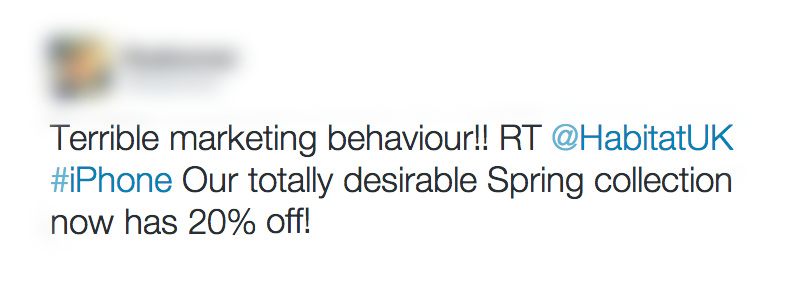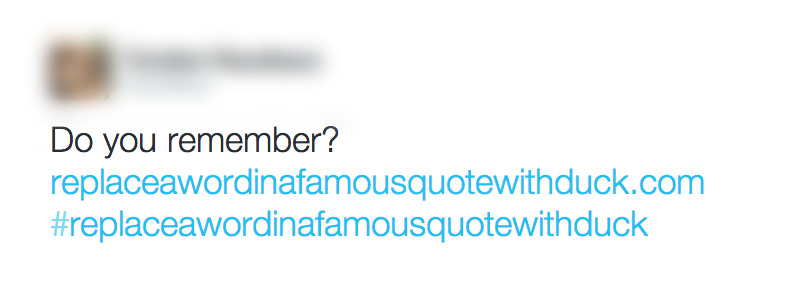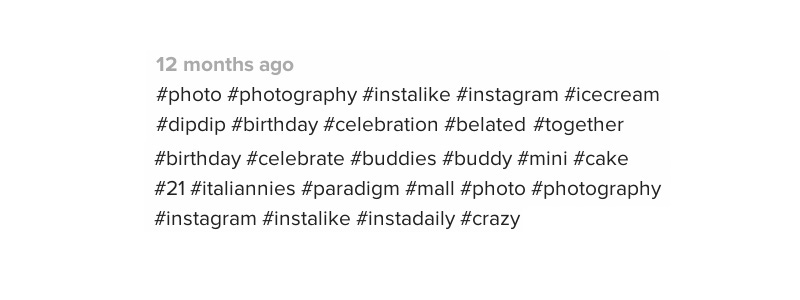BLOG
Hashtag Blunders That Hurt Your Social Media Marketing Efforts
Twitter’s humble creation, the hashtag, was first created by Twitter users themselves to collate Tweets under the same category and has since become an essential marketing tool for any social media maven. The hashtag has found itself taking over many social media platforms showing its face on Facebook, Instagram and Tumblr posts. Hashtags have even shown up in advertisements and TV shows and found their way into regular conversation!
How do hashtags work? Or rather, what is it with hashtags that make them so popular? Well for starters, they’re a handy social media marketing tool used to highlight the latest trending topics, to tie campaigns to keywords and to segregate conversations. They’re fairly simple and easy to understand and can expertly convey a sentiment with just a couple of words. In a sea of information it’s easy to get lost, and hashtags help us find the things and conversations we’re interested in. But easy to use doesn’t mean you won’t make mistakes, so here are some common hashtag fails to avoid.
Hashtag Blunder #1: Using Trending Hashtags Despite Its Irrelevance
So how to use hashtags? The primary purpose of the hashtag is tie a current or trending topic to your brand. When you see a trending hashtag, you need to find a way to relate it to what you’re talking about in your post. For instance, if a trending topic is #skyhighheels, you can post a photo of a model wearing high heels, offer an outfit suggestion that features high heels or ask your followers to describe how they feel when they wear your brand’s high heels, while adding the hashtag to the end of the post. If #LadyGaga is trending, use the hashtag to highlight a point when she used or mentioned your product.

Some brands simply don’t get this. They use trending hashtags and insert them into their posts, even if the hashtagged topic is completely unrelated. For instance, how would #iPhone relate to a post about how you can cook kale? How would #MileyCyrus relate to a promotion about a book sale? How would #ilovekale relate to a tweet that doesn’t even involve food? It wouldn’t. This is an obvious example of trying to jump on the hashtag train, and your followers will see right through your attempt. This is a hashtag fail in more ways than one. It not only makes you look desperate, but it will cause people who actually want to follow you to unsubscribe.
What you can do instead is create your own hashtag and encourage your audience to use it whenever you’re talking about a brand. You can use your brand name or you can condense your company slogan into a hashtag.
Sharpie was able to successfully pull this off when they created #sharpie. Their followers started including #sharpie when they were talking about decorating with a Sharpie, a popular artist using it as a medium or simply whenever they used a Sharpie for a personal project. This created brand awareness, and on top of that, Sharpie had more control over how its hashtag could be used.
When it comes to using your company slogan as a hashtag, it would work well if it were short. But if it’s a long sentence, you may be on a slippery slope to…
Hashtag Blunder #2: Using Long Hashtags
Long hashtags are generally okay, but if you’ve got a hashtag that looks like this: #ilovemysoyajasminemilkteadrink, then you’re keeping people from coherently reading what your hashtag is saying. Phrase hashtags are a useful tool, but if you intend to use an entire sentence in there, chances are your hashtag will be ignored as just another annoying social media gimmick.

When using a phrase hashtag, keep it short and simple. Limit it to three or four words, tops. If the audience can’t read it, let alone retype it, your brand will definitely be the only account to use it. Remember, you can also use popular abbreviations such as #lol or #yolo to convey a certain feeling without having to create a long phrase hashtag.
Hashtag Blunder #3: Too Many Hashtags
#Have #you #ever #seen #posts #like #this? Social media marketers who do this are trying to build viewership by including it in a wide range of hashtag searches to get more attention. This is not how to do social media marketing. The audience can tell when a brand is trying to force its way into a hashtag, and the long, confusing phrase makes the caption really annoying to read. This could lead to significantly lowering their online interactions! Remember to keep your hashtags short and simple. You want to make sure people can find your content, so don’t use tags their spellchecker can’t fix!

Sites that don’t have a character limit, such as Instagram or Facebook, may be a victim of too many hashtags. You’ve probably already seen some brands using up a paragraph’s worth of space dedicated simply to hashtags. In these hashtag parties, they often repeat some hashtags with minor changes to the words they use. For instance, #ilovemycoffee #ilovecoffee #lovecoffee #coffeelove #lovingmycoffee #coffee #love and all sorts of other variations may find their way into a post. If you’re managing the social media of a company, do not do this, no matter how tempting it may be.
Instead, use some targeted hashtags or simply, use more relevant hashtags. As stated time and again on social media, quality matters over quantity. It may not generate as much engagement, but isn’t quality engagement more important?
For example, pretend you own a dessert bar named Lemon Lime. Instead of using too many hashtags like #LemonLime, #lime, #lemon and others, create your own unique one like #LemonLimeLove to express a great dining experience. When customers dine in your dessert bar, they can add #LemonLimeLove to their posts about their great dining experience to simply show that they’ve eaten at your dessert bar and enjoyed it.
Hashtags are fairly simple to understand and easy to use. Add a “#” to the beginning of a word or a phrase, and you’re almost good to go. They’re a great social media marketing strategy, and you have some room to learn. Social media blunders are forgivable, but if you constantly misuse hashtags, not only will you have minimal interaction on your page, but you’ll most likely be unfollowed by people.
The final word on hashtags: #keepitsimple.











